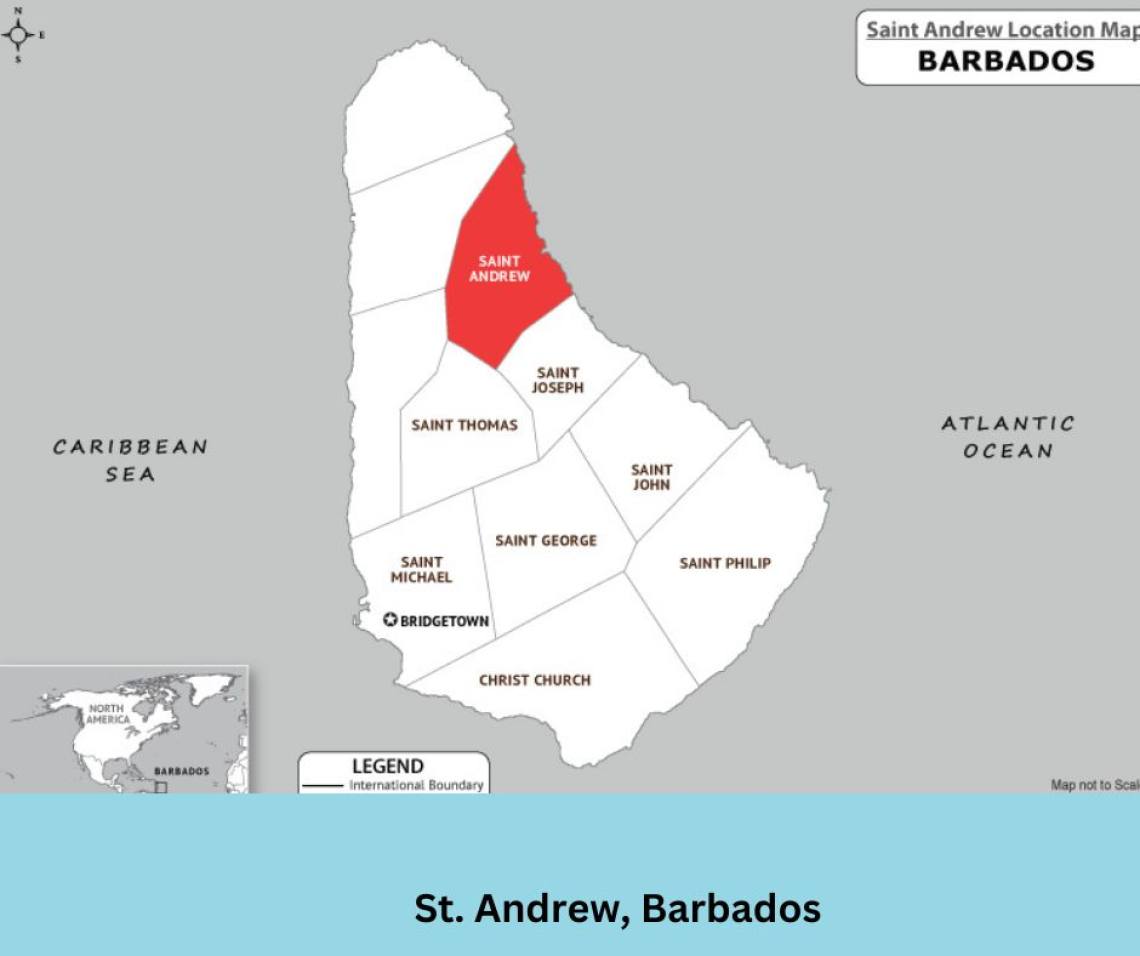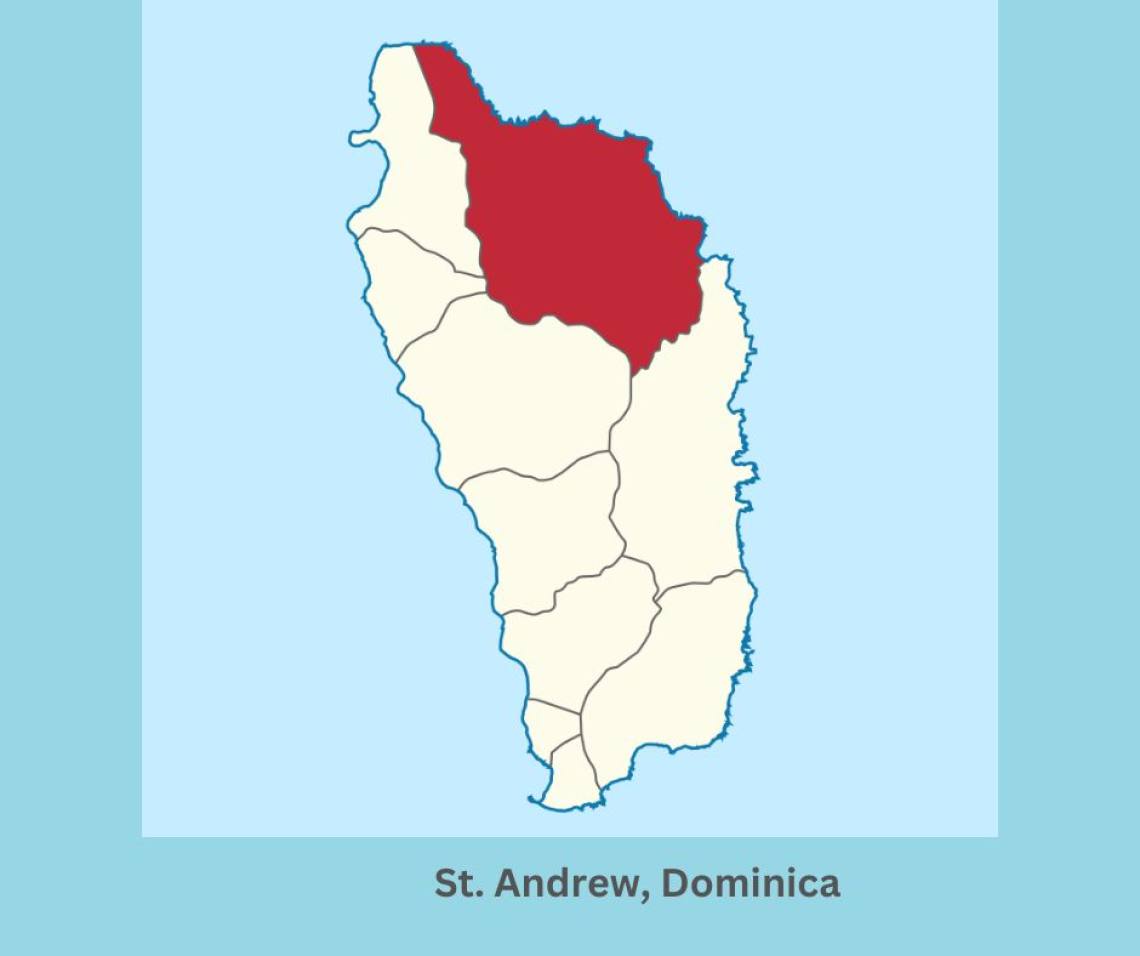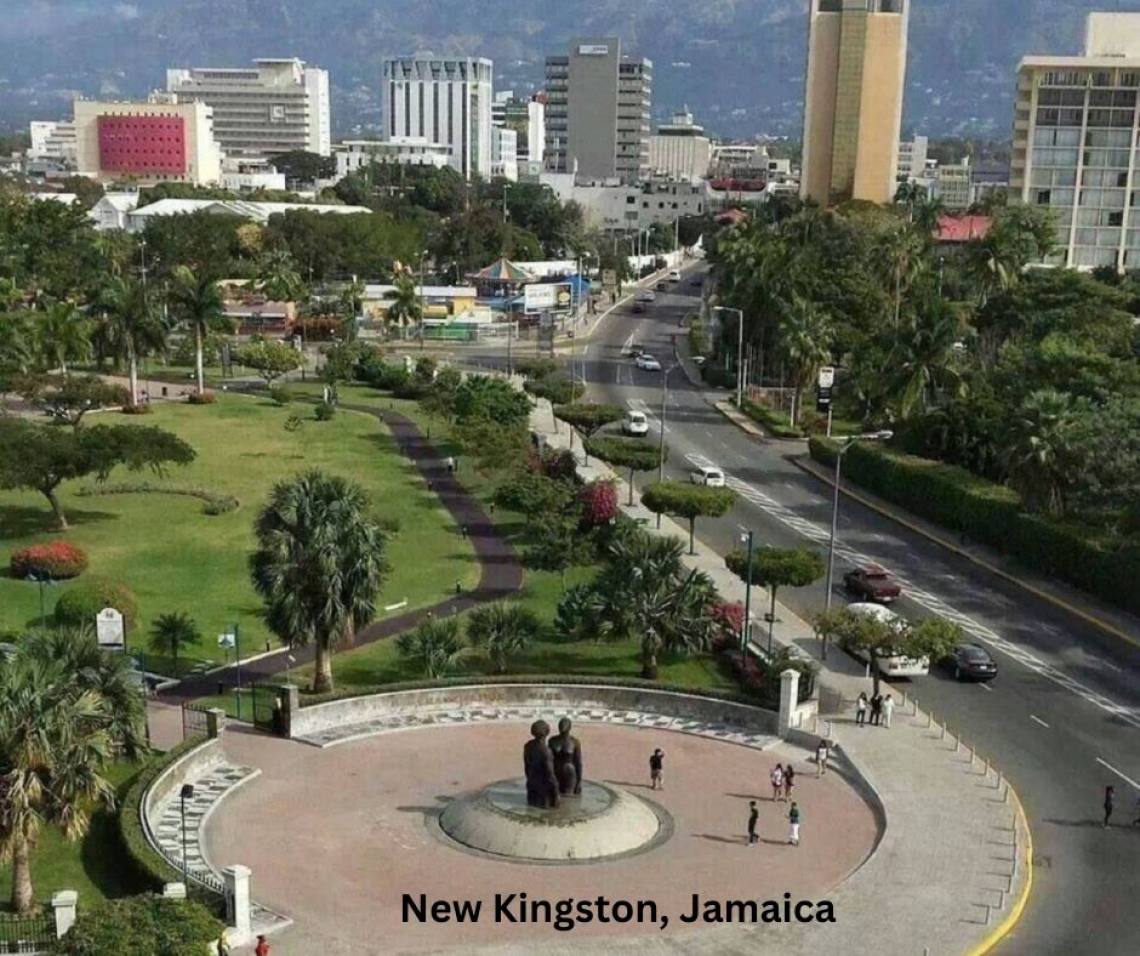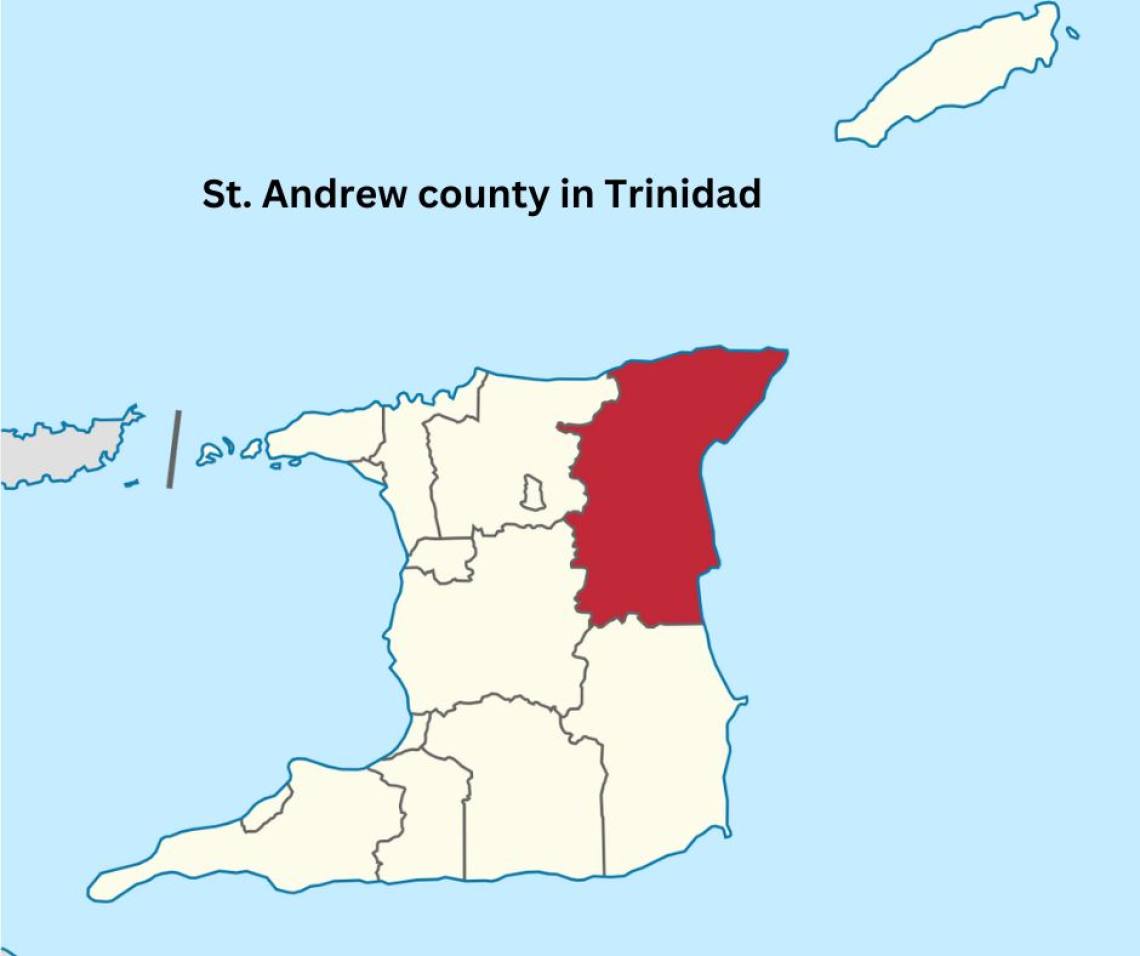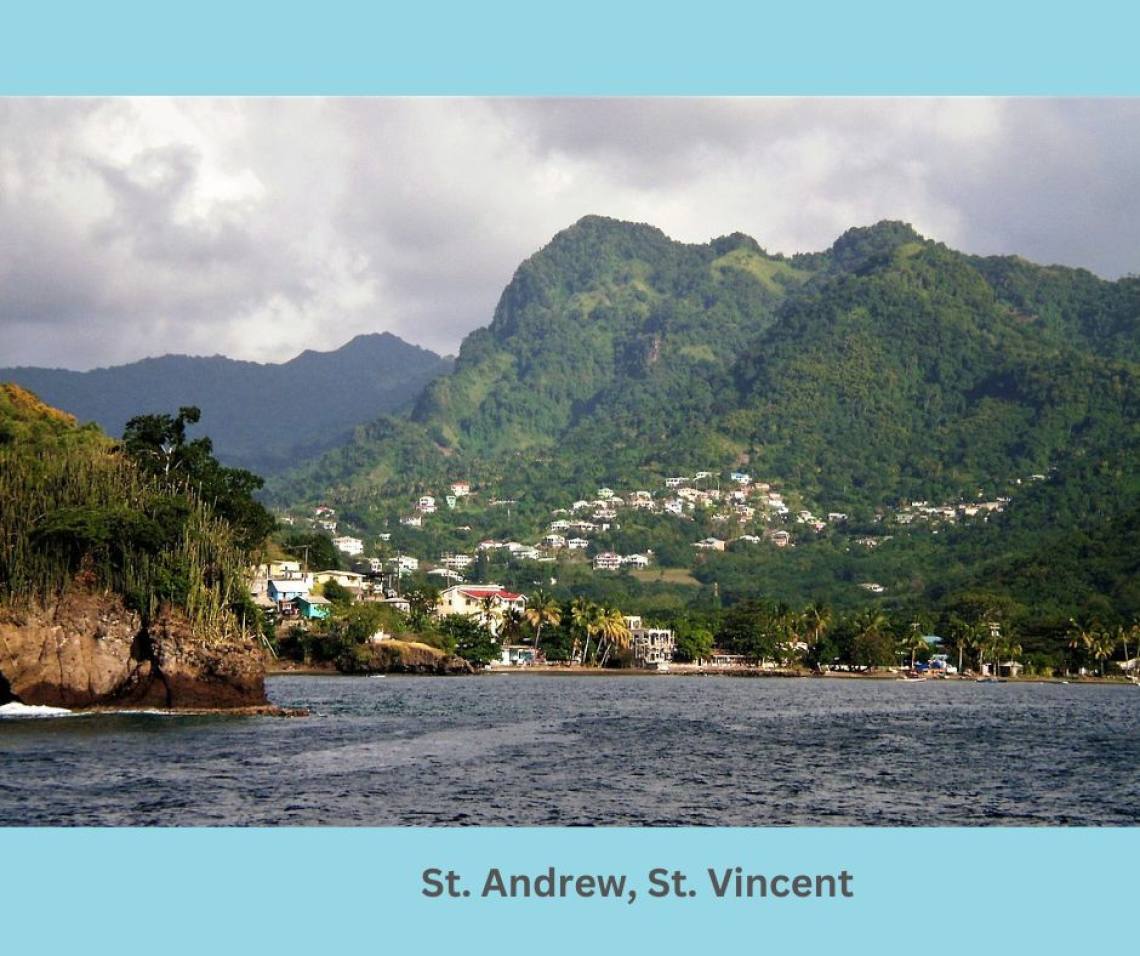Finding St. Andrew in the Caribbean
Finding St. Andrew in the Caribbean
St. Andrew, the patron saint of Scotland since 1320, was the name given by the British to parishes (civil subdivisions) in several Caribbean islands that they conquered. St. Andrew was a disciple of Jesus Christ who was martyred by crucifixion. His crucifixion is reflected in the Scottish flag - the Saltire, which features a white diagonal cross on a blue background.
IN BARBADOS, the Paish of Saint Andrew is one of eleven parishes, situated in the northeastern area in the country with a small population of approximately 5,100 inhabitants. Saint Andrew is largely rural with green rolling hills. Saint Andrew also has the country's highest natural elevation, the 336 m (1,102 ft) Mount Hillaby at the southern part of the parish. Scotland District was given that name since it reminded the British of Scotland. Saint Andrew’s coastline meets the Atlantic Ocean, more turbulent than the Caribbean Sea on the west. In the country’s effort to preserve the environment the parish is home to several natural reserves including the Turner's Hall Woods. Other well-known places in St. Andrew are Barcley’s Park, Morgan Lewis Windmill, and the gothic style St. Andrew’s Parish Church, built in the 17th century or possibly earlier.
IN DOMINICA St. Andrew is the largest of the island’s ten parishes with a population of over 14,500. It is located on the northeast facing the Atlantic Ocean and home to the last remaining Kalinago people, a pre-Colombian population. St. Andrew is largely rural with tourist attractions organized by the Kalinago people. Over 60% of Dominica is covered by forest. From the high-altitude cloud forests to the low-lying woodland and much in-between, the country is a hub for forest diversity that changes according to the variable terrain and altitude. Wesley is the main town, which has the island’s main international airport.
IN GRENADA Saint Andrew (popularly known as the Big Parish) is the largest parish and Grenville (formerly La Baye), its main town is the second largest after the capital, St. Georges. It is to the east of the island, bordering the Atlantic Ocean, with a population of approximately 23,000 people. In the 1650s it was a French territory called Morne de Combat. Marquis was the first parish capital and changed to Grenville in 1796 under British rule. St. Andrew is steeped in history with several important Amerindian archaeological sites and historic buildings, including some churches, the courthouse and police station, whose architecture dates to the 1800s. Grenville is a commercial hub with among other things, a large nutmeg processing plant for export. Popular tourist attractions in the parish include the St. Margarets (Seven Sisters) Falls, and extinct volcano called the Grand Etang National Park and Forest Reserve. The forest reserve is home to some of Grenada’s endangered animal species including opossum, armadillo, mongoose, the Mona monkey, and an endemic tree frog.
IN JAMAICA, the Parish of St. Andrew was among the first parishes established between 1661-1664 and entered into law in 1867. It is lies on the south-eastern area of the island. In 1923, it was merged with the parish of Kingston and renamed the Corporate Area of Kingston and St. Andrew. The parish council was then named the Kingston and St. Andrew Corporation (KSAC). In comparison to the other thirteen parishes, St. Andrew is densely populated with over 570,000 inhabitants. It has a large urban area with several important institutions, including the offices of the Governor General and Prime Minister. The internationally renowned singer, Bob Marley had his studio on Hope Road that was later converted to a museum, a popular attraction for tourists. Although Half-Way Tree is the capital of St. Andrew, with a clock tower that marks the town’s centre, the true capital is arguably its commercial hub, called New Kingston. To the north of the parish is the majestic Blue Mountain range.
IN TRINIDAD AND TOBAGO, St. Andrew is a county located in the northeast of Trinidad and bounded on its shores by the Atlantic Ocean. It has a population of over 17,600 inhabitants and Sangre Grande (often called Sandi Grandi) is the main town. The county is administered by the Sangre Grand Regional Corporation which is divided into five wards - Valencia, Matura, Manzanilla, Tamana and Turure. Sangre Grande is a bustling urban centre. In St. Andrew’s countryside is Aripo Savannas, where bird watchers go to spot a variety of birds, including Savanna hawks and Red-Bellied macaws. North of Aripo, the Hollis Reservoir (built in 1936) that has hiking paths and wildlife, as well as Matura Bay where visitors can see endangered leatherback turtles. Nighttime excursions to see these turtles are led by local guides, authorized by the nonprofit conservation group Turtle Village Trust.
IN ST. VINCENT St. Andrew is at the southwestern end of the island, with a population of approximately 7,000. Its capital is Layou. Tourism in that parish is a major contributor to the economy. St. Andrew is largely rural with natural parks and hiking trails, such as the Vermont hiking trail. The parish’s highest point is Mount St. Andrew, which is just under 2,000 metres high. St. Vincent Parrot is an endemic specie that lives mainly in the upper west and east ridges of the central mountain range, just south of Mount Soufriere and the La Soufriere volcano at elevations between 125 to 1,000m. It is a large parrot, larger than the Orange-winged Amazon (Amazona amazonica).
July 2024
Copyright ©️ Expérience Jamaïque. Tous les droits sont réservés. Conçu et développé par LucraLux Marketing.



